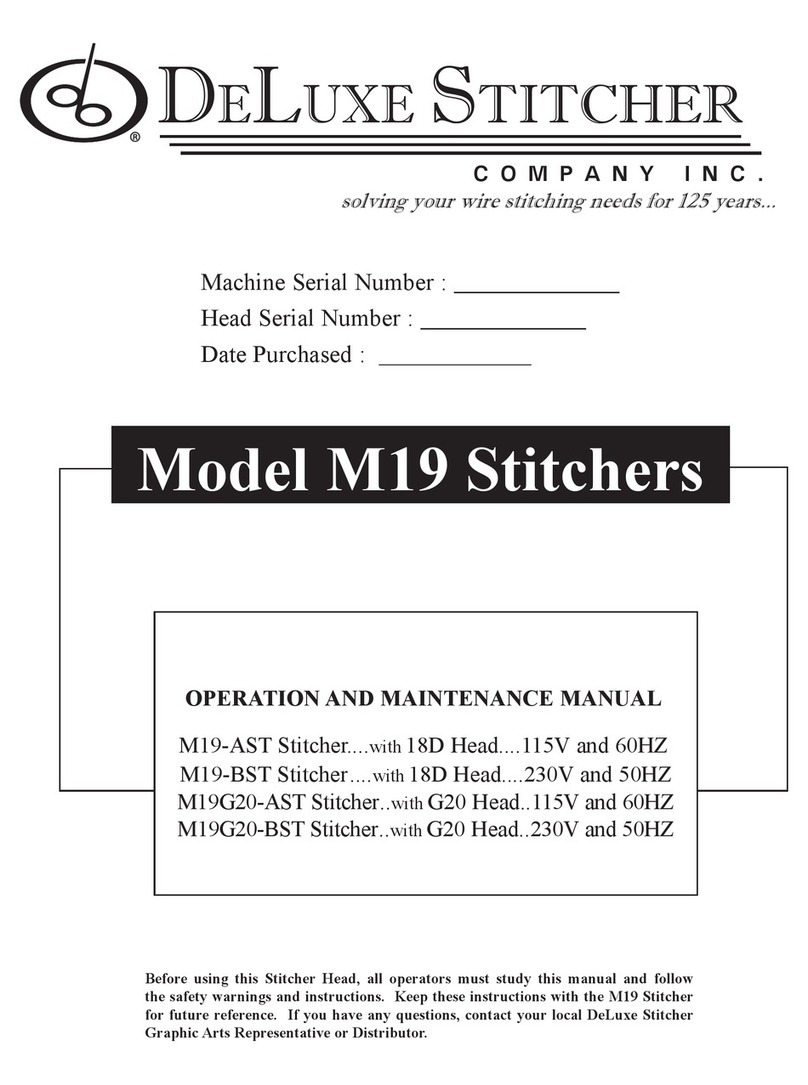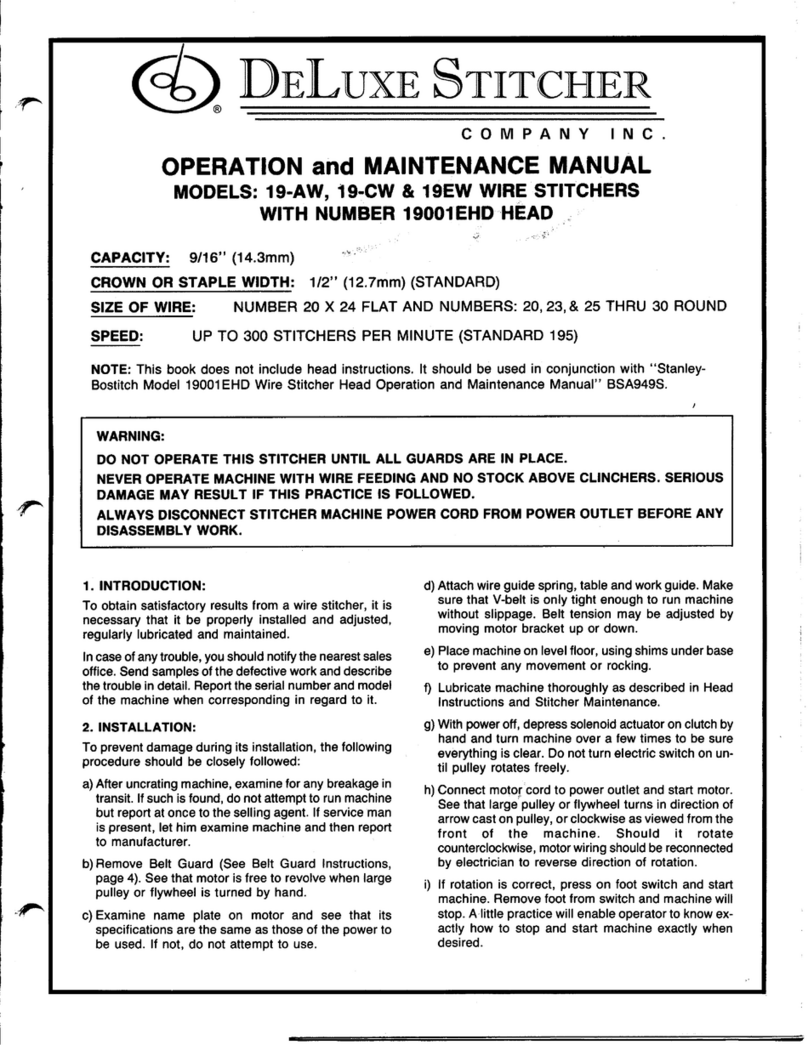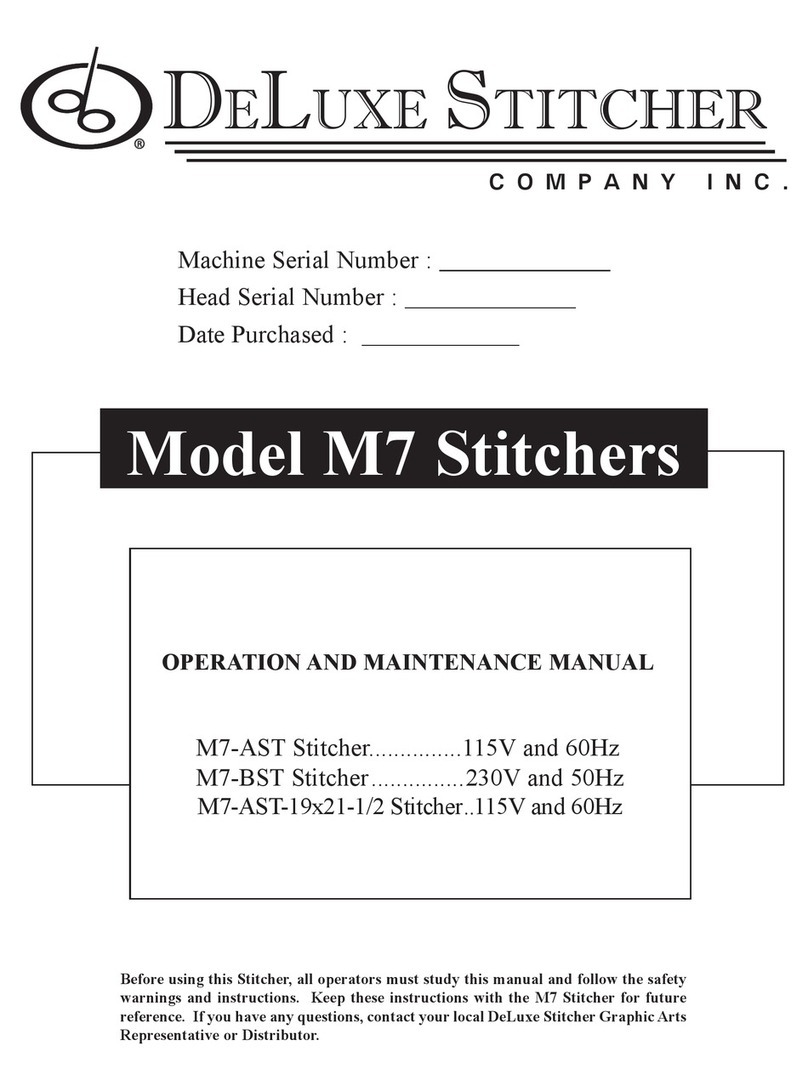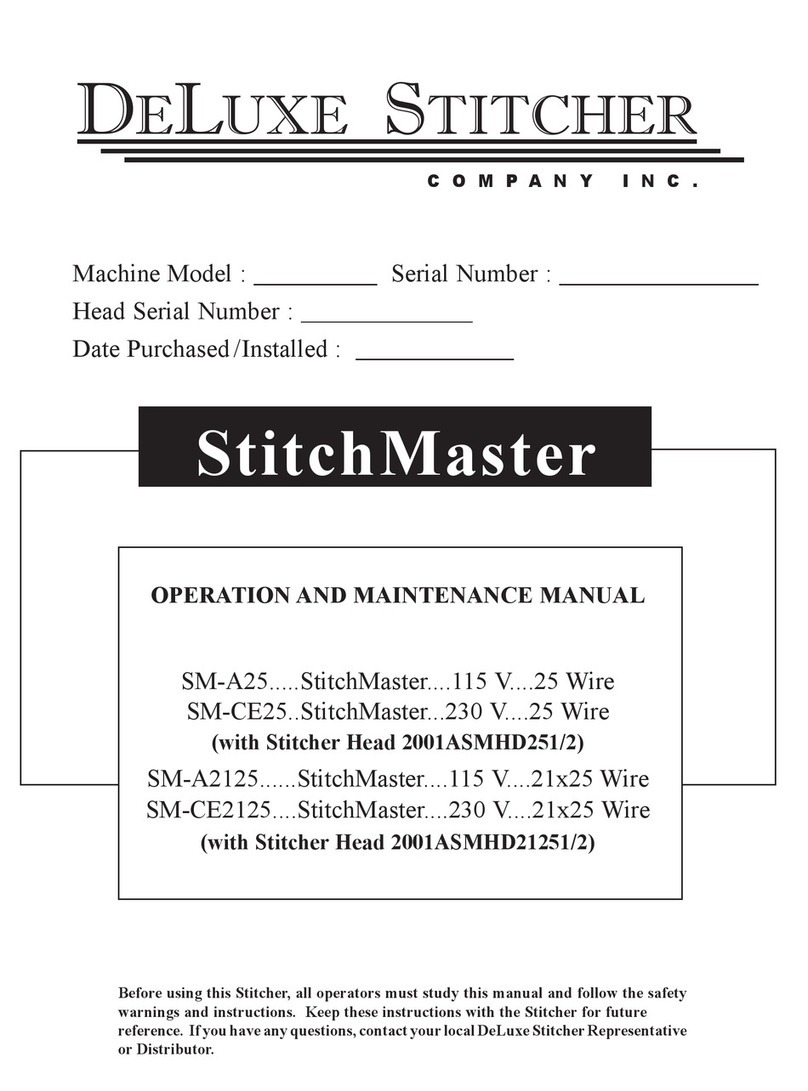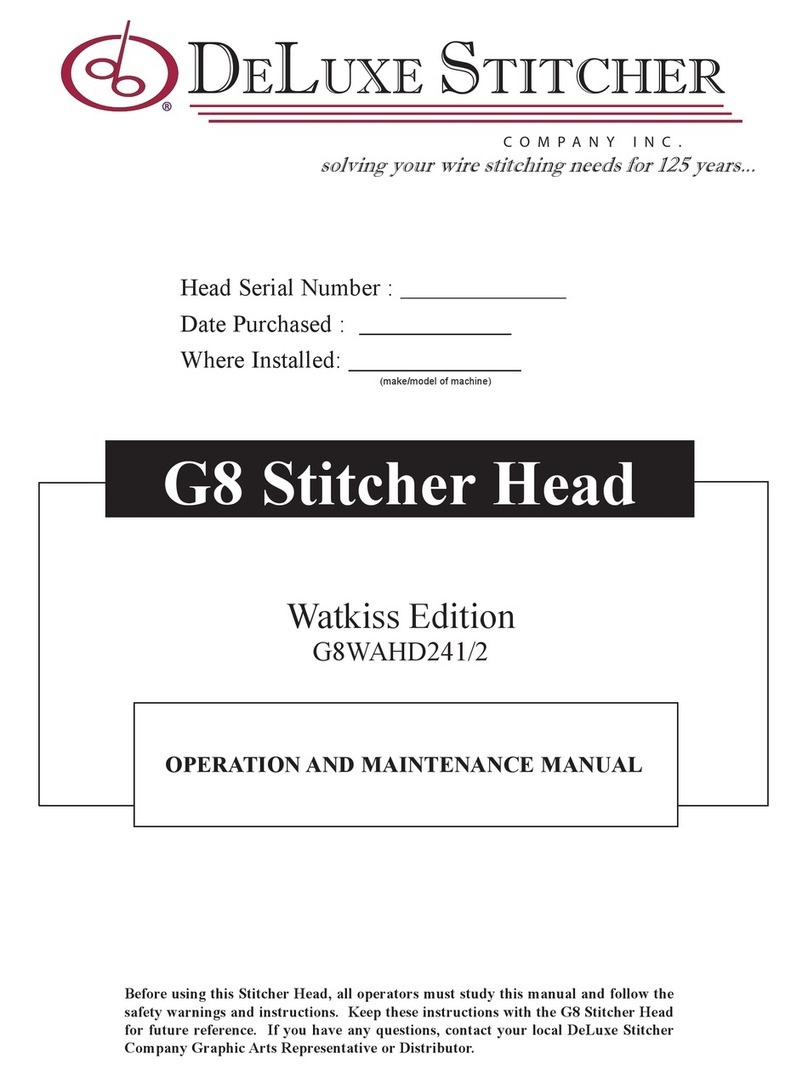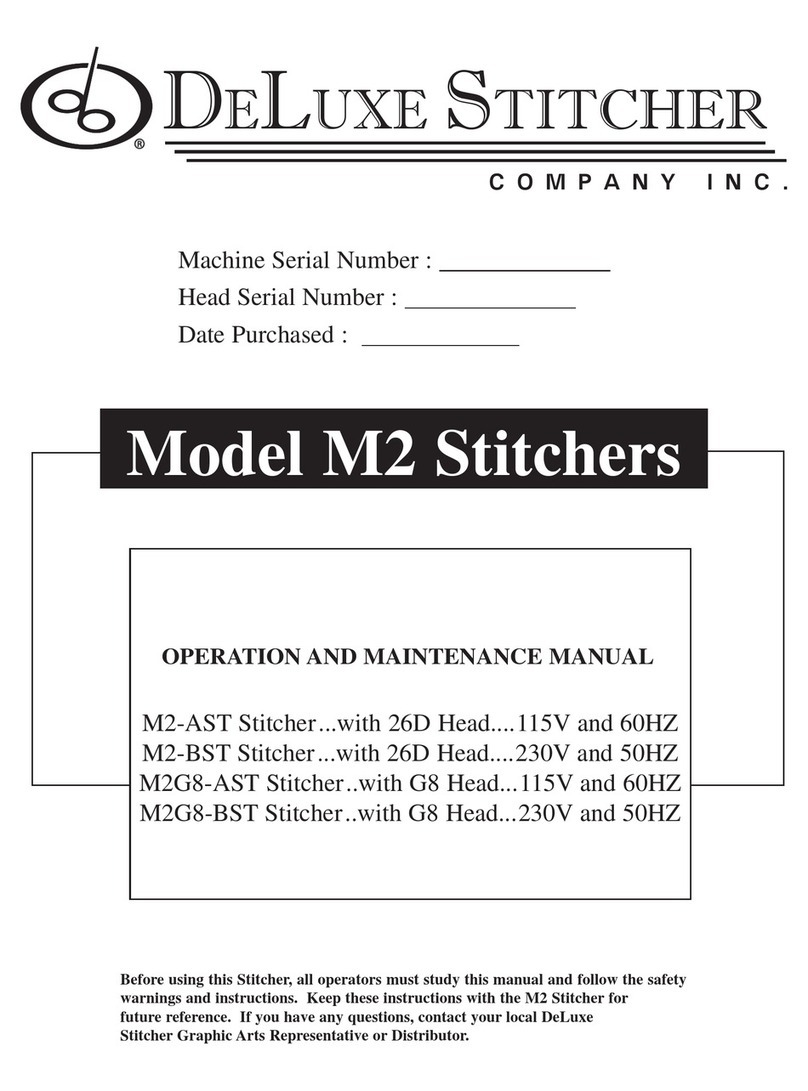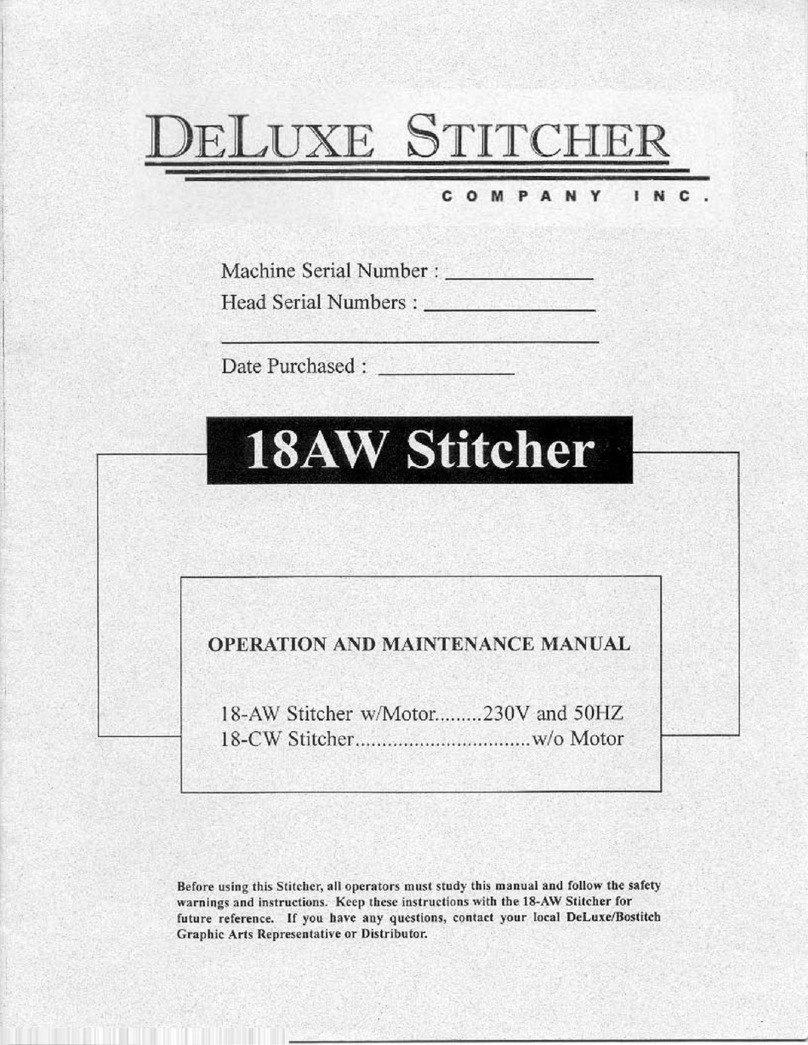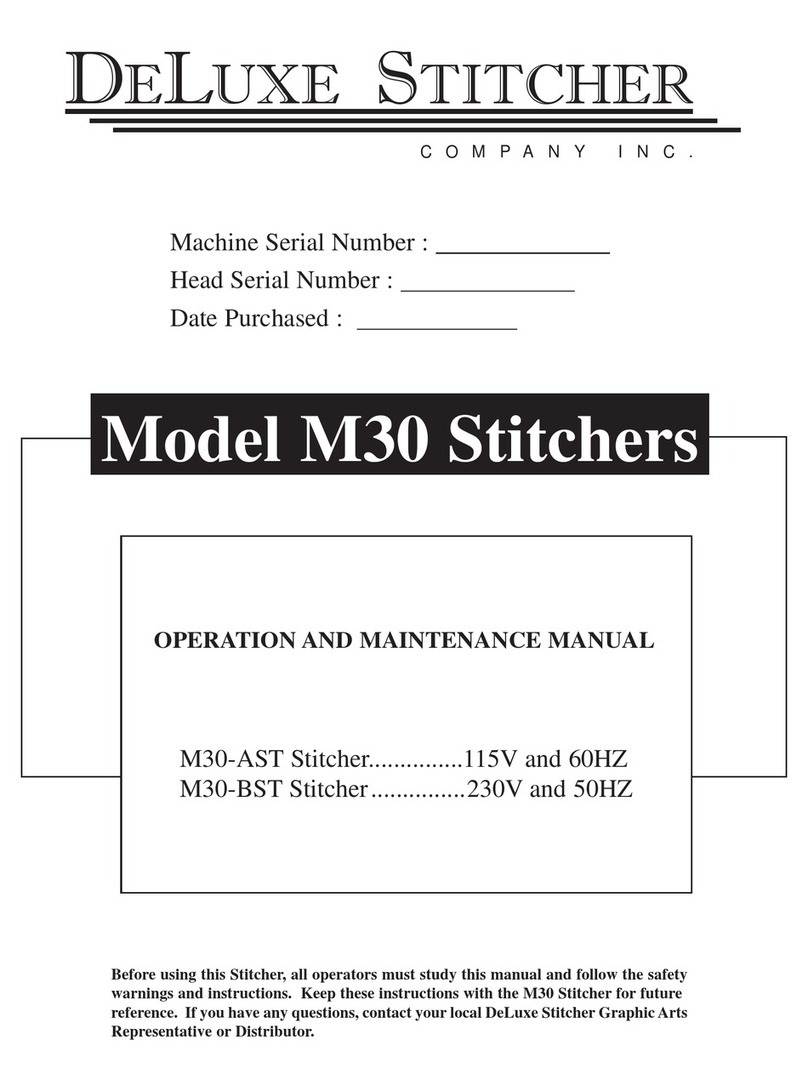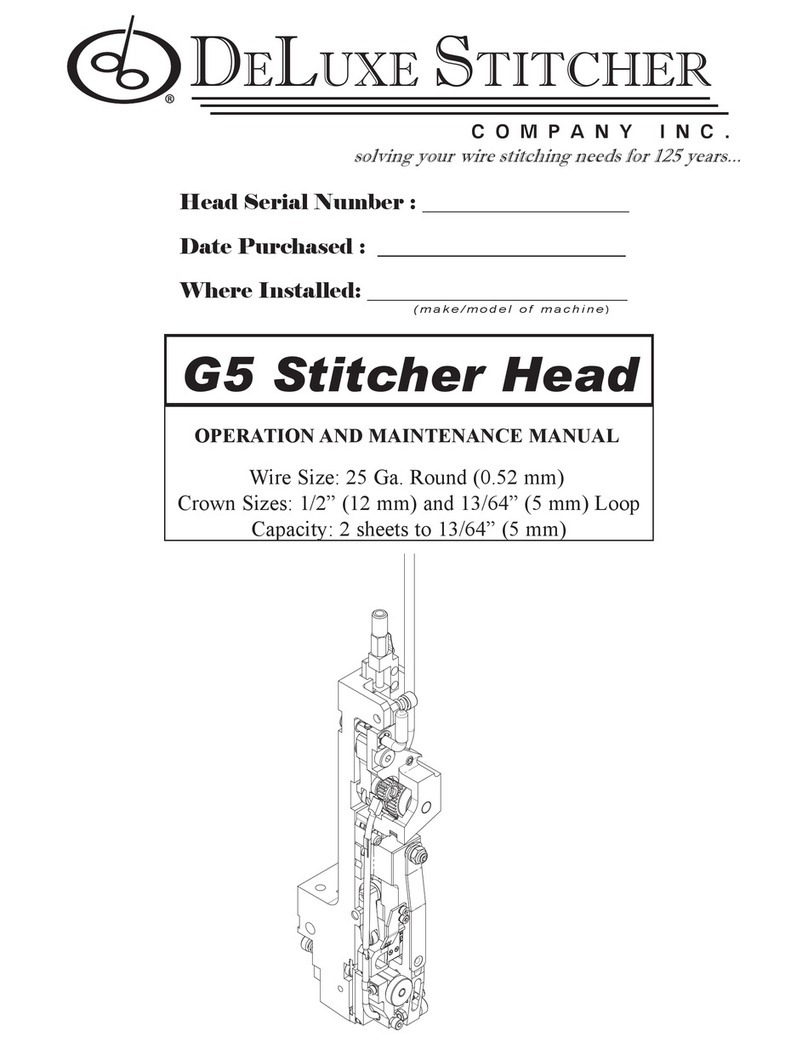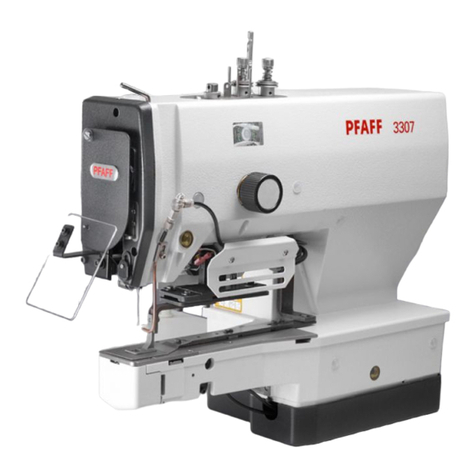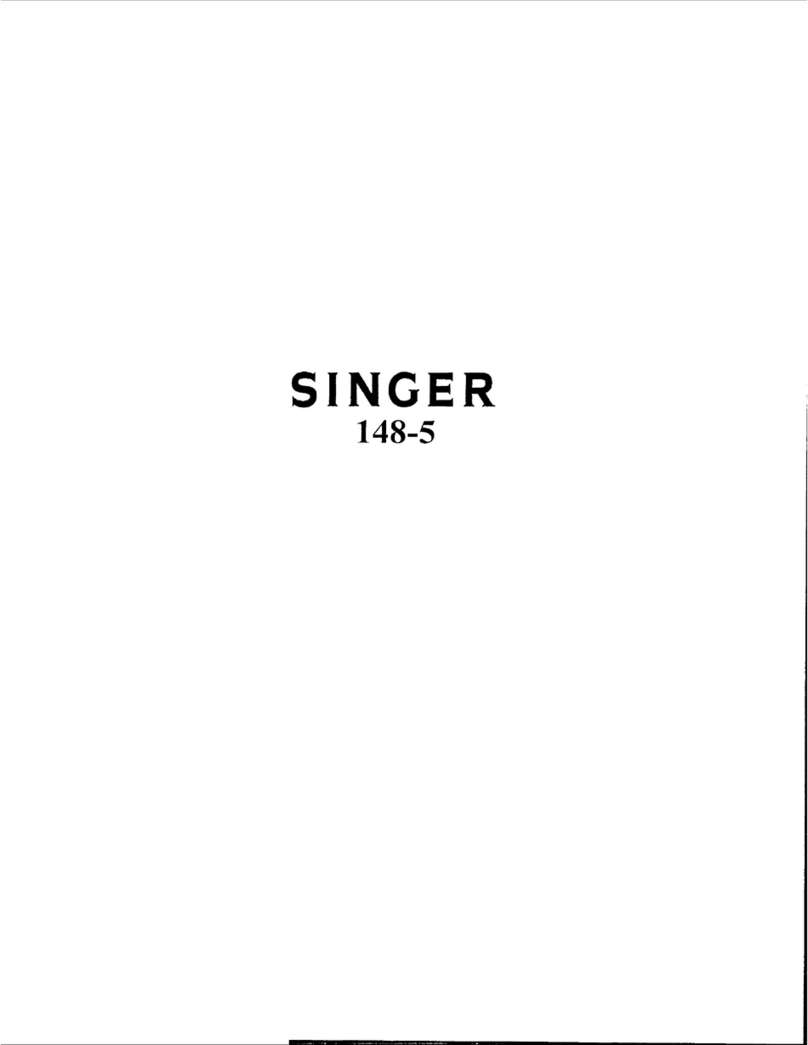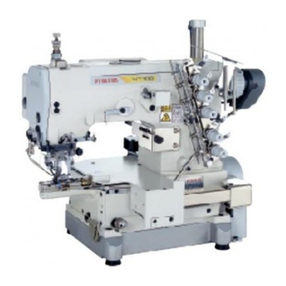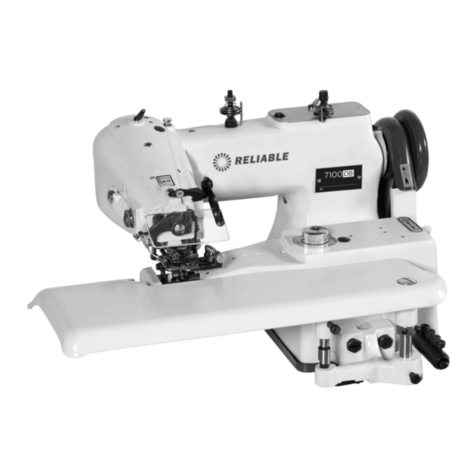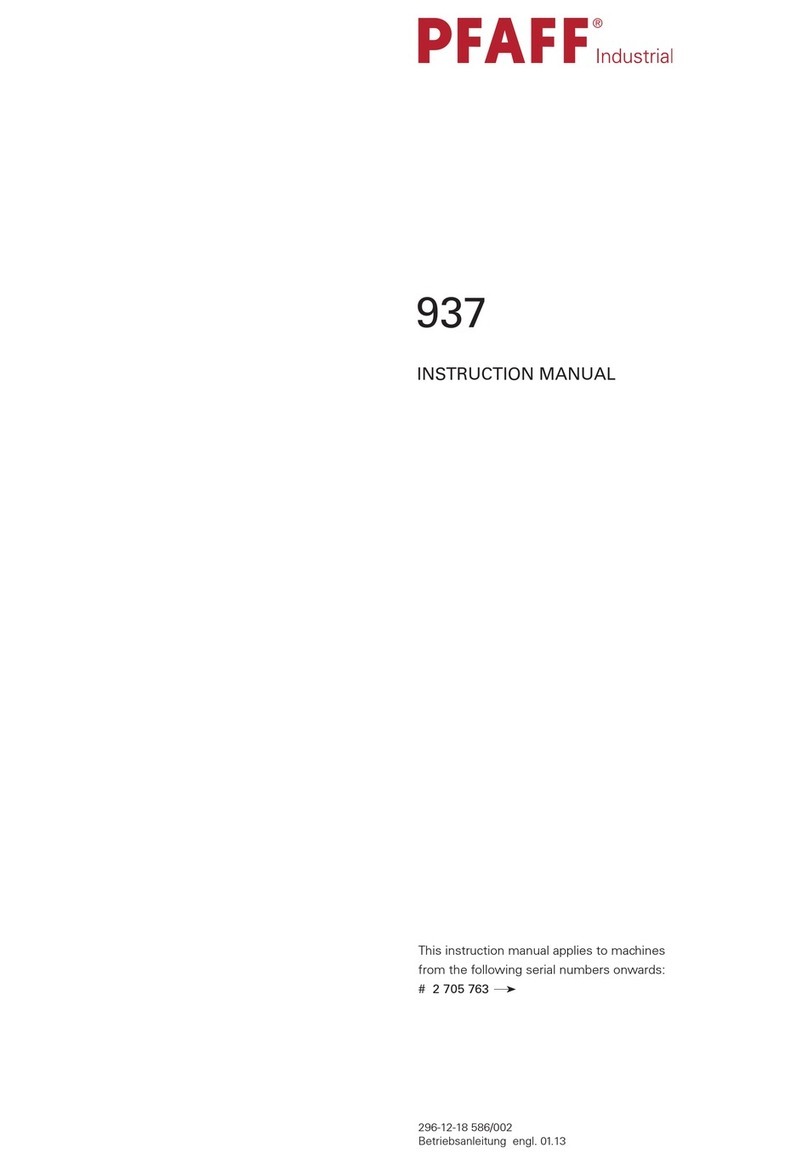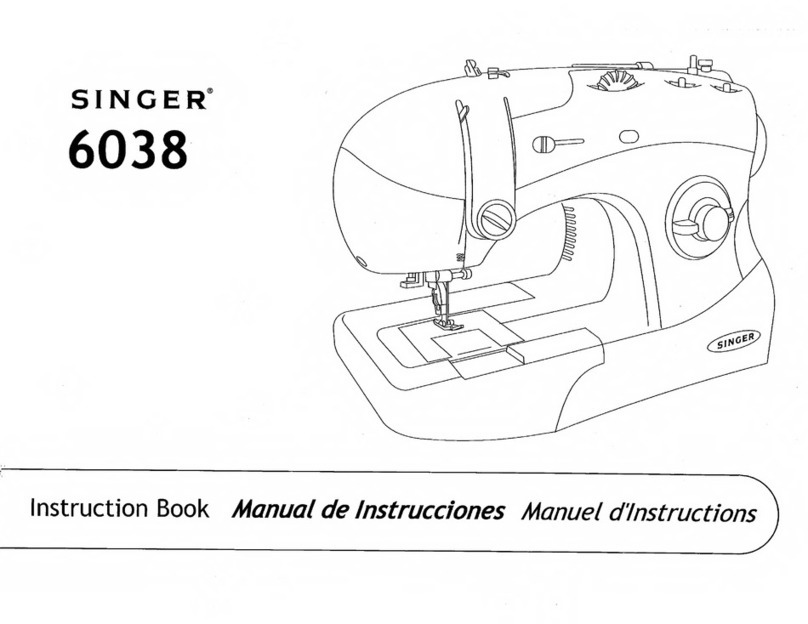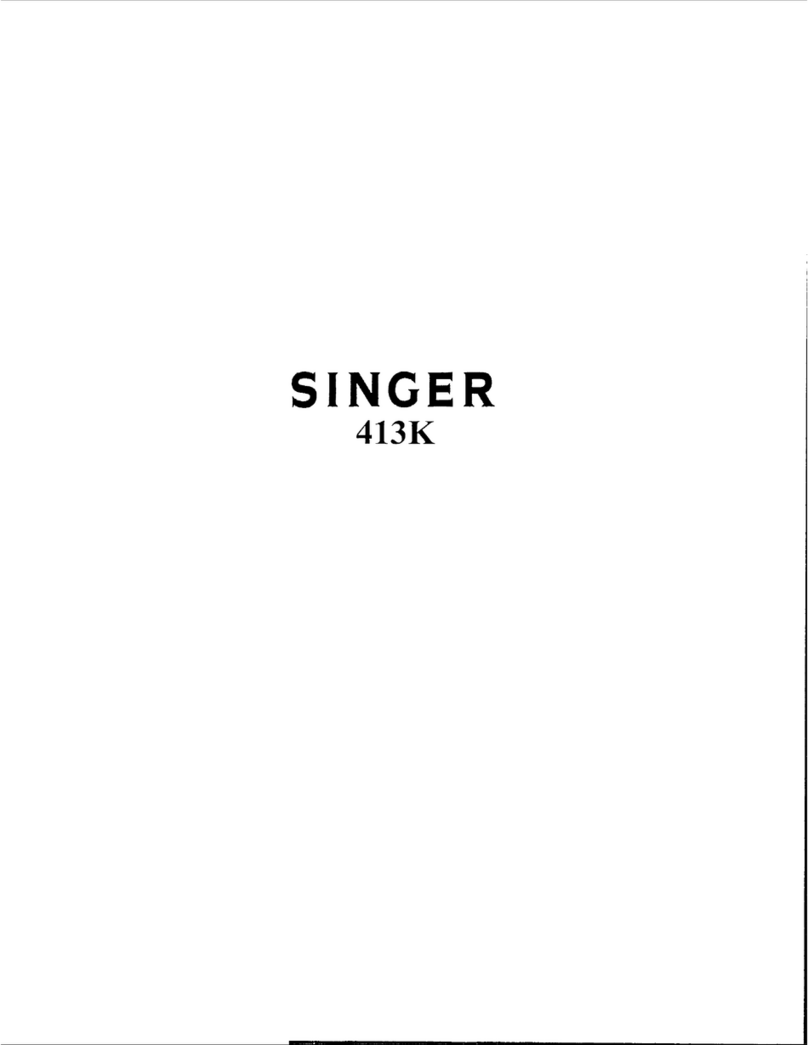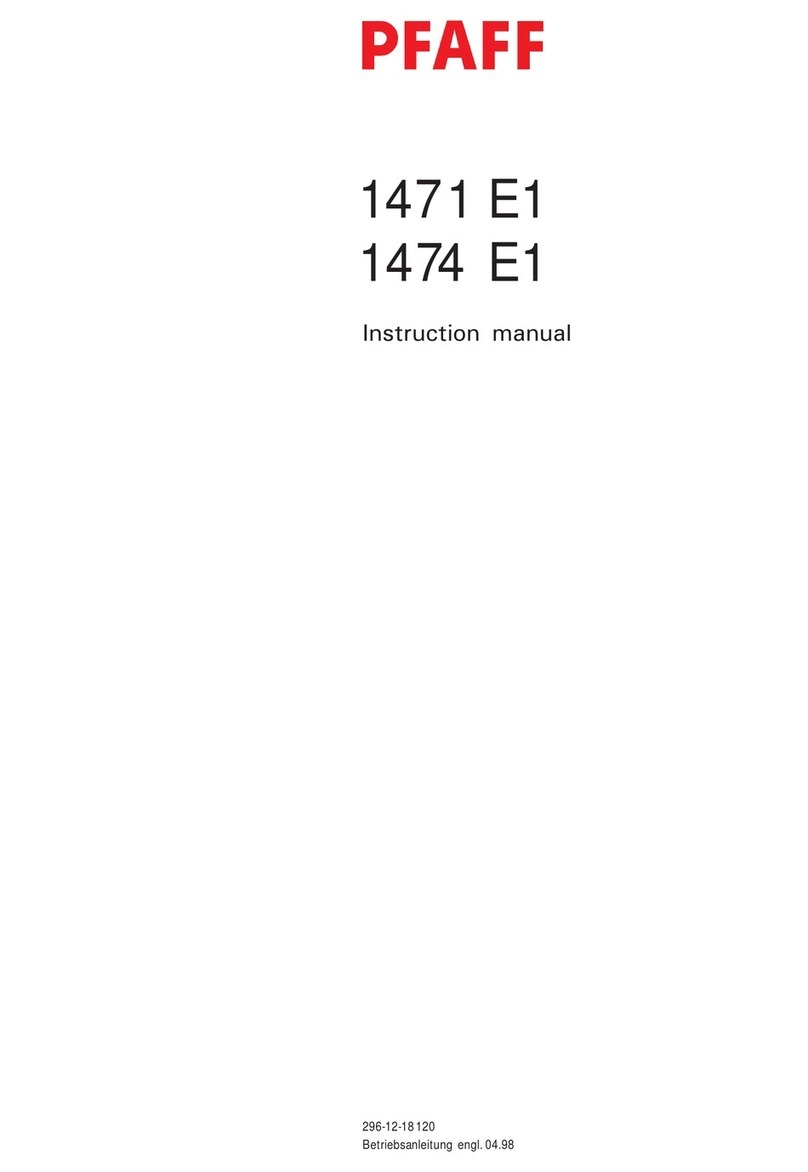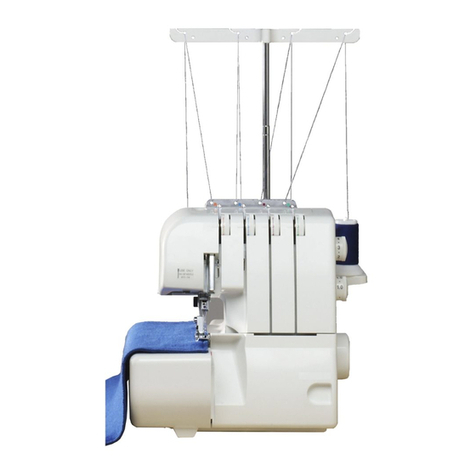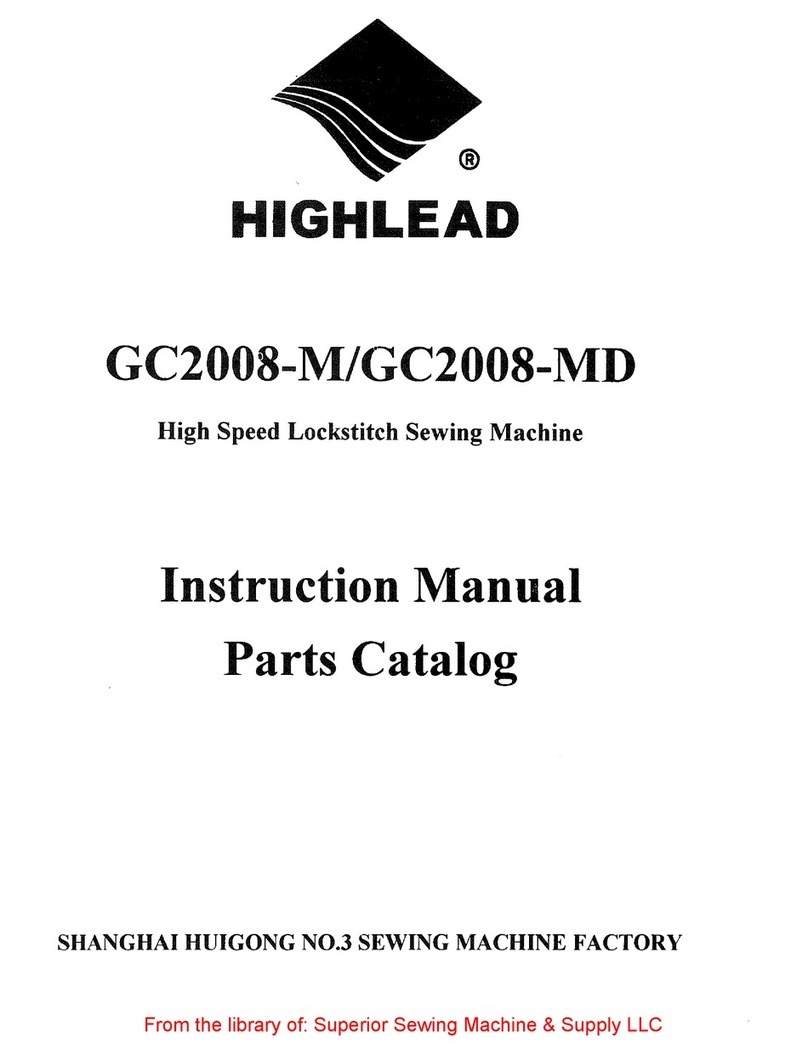
Wire Straightening (Figure 4)
Remove the Swivel Assembly (9038M or
9038A), the Swivel Operating Spring
(9046A) and the Swivel Operating Hub
(9163). The Swivel Operating Spring is
easily removed after rotating it to a position
comparable to 10:00 on the face of a clock
and pulling. Switch the Trip Mode Switch
(PG10232), found on the back of the
Machine, to continuous stitching and
activate the Foot Switch (PG10230). Watch
the feeding of the Wire through the Swivel
Holder (9043B). Notice the direction the
Wire is moving as it feeds out of the bottom
of the head. To compensate for some of the
Wire Spool’s (25G5 or 21256G5)
natural curve, the wire optimally should be
feeding slightly to the right. Use the Wire
Straightener Eccentric Nut (9067) on the
FacePlate(2132BA)toadjustthewire.
Right-to-Left Adjustment
LookthroughtheSwivelHolder(9043B)
at the Wire being fed through the Head. If
the Wire is feeding to the left or perfectly Figure 4 - Wire Straightening
Make sure the Swivel has been removed
before tripping the MiniStitcher to avoid
jams and the chipping of parts.
WARNING
8
Wire straightness is important so that the stitches are loaded, driven and closed properly. Although
straightness is set at the factory, every roll of wire has varying degrees of twist which makes it
necessary for the user to properly straighten the wire prior to production. Easy steps for straightening
the wire are listed below.
MG10001A
9070 (2)
9067 (2)
2132BA
9043B
threading process. With the Swivel still removed, power the MiniStitcher on and switch the Trip
Mode Switch (PG10232), found on the back of the Machine, to single mode stitching. Replace the
Head Guard and trip the Foot switch to allow the wire to automatically thread between the Grip and
the Grip Holder. This will also cut off any excess wire below the Cutters.
9163
9046A
!
